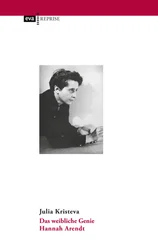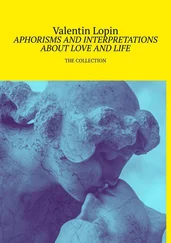Even if she often got lost in the psychological labyrinth of those male and female attractions, Eros and Agape together, drives and idealizations combined, Teresa was not content, either, to rehabilitate an Aristotle of touch in order to sketch the outlines of a new Ethics : one that had remained embryonic in the Greek philosopher’s writings and that it is our task to develop, over and over again, in a modern world that doesn’t bottle up its desires.
She achieved more.
Body and soul, the Teresa-subject is torn apart and reassembled in and by the violent desire to both feel and think the Other, both at once. This desire, resting on the tactile contiguity of bodies, is recognized by its violence and endlessly alleviated through its elucidations. The touch of another, elevated into the principle of the Other, consecrates what is foreign to one as an intimate, indelible component of psychic and physical vitality from now on. Touch is at once the ultimate survival instrument of animals, betraying the persistence of animality in the human zoe , and tact — a supremely human quality, an acute attention brought to bear on the tolerable, a psychic flexibility. The Teresa-subject confers ontological status on the desiring body, while at the same time ascribing to it — via the ambivalence bestiality/tact — a certain polyphony, polysemy, with all the malleability of the many dwelling places of this new soul. You can see how such topologies are not chunks of a sunken continent, nor ruins awaiting an Infinity of abandonment, far from it: they are the points of impact of infinite desire, locations touched by and in desire’s unending motion.
Your daughter Angélique would not have scorned my saint, since she once said, as you reported to Sophie Volland, “On fait de l’âme quand on fait de la chair”: “you make soul by making flesh.” 34In D’Alembert’s Dream (1769), you expounded something more than a materialistic doctrine. Could it actually be an experience?
TERESA, NOW
Teresa’s extraordinary innovation consists in this incorporation of the infinite, which, working backward, against the grain, returns the body to the infinite web of bonds. I could scarcely have gotten you to appreciate the magnitude of such a revolution, dear Maître, had Leibniz not perceived it first. The polyvalent soul-body ensemble, constructed and written with Teresa and thanks to her, is only possible so long as it refuses to be merely the sign of an Other-Being, affixed to it from outside (as we find in Fénelon-Guyon). This is possible if — and only if — the body-soul ensemble is experienced as a point in which the infinity of the Other-Being insists on impressing itself. If, and only if, the speaking subject, body-and-soul, is an infinity-point ; and, conversely, if the infiniteness of the Other-Being “presents” itself in the point that I am. Indeed, Teresa the Bible reader (perhaps reluctant to admit it, and never acknowledging her Marrano genealogy) specifies that “He” is “graven.”
The “mystical marriage” and other inordinate formulations, such as “I am transformed into God,” among countless equally extravagant metaphors-metamorphoses, herald this modulation of the subject that consists in and with Infinity — though Teresa herself disowns it at times as a piece of pure “folly.” I am not a “sign” that “suggests” an external Being (whether Creator or Savior, loving or judging). I form part of Him, I participate in Him, I seek myself in Him, I am Him , for all that I do not equate with Him. I , the subject, belong to a symbolic sequence where nothing is a mensuration of the whole part by part. As an infinity-point , I obey a different logic: I follow laws of transition and continuity where nothing equates with anything else and every coincidence conceals an infinitely small distance. An irreducible gap always obtains between Being and the broad ensemble of “subjects,” “singularities,” “numbers” able to express it, among which I disseminate myself by writing and doing. I belong to a geometry that is no longer algebraic, but analytical. I am a site of the limitless signifier. In this my dynamic of perpetual transit, knowledge ( connaissance ), as in joint birth ( co-naissance ), is not a totalization so much as an exhaustive process of subtraction whereby the infinite moves closer to an always retreating term. Why do you talk of “lack,” “suffering,” “persecution”? I’ve escaped your algebraic world of “selves” orphaned of the Whole, because I am the very impact of the Infinite , ad infinitum.
But, let’s be clear, this infinity at work in the infinity-point that I am never reaches fullness: that is how I avoid misidentifying the Nothingness that so beguiles you and brings you peace, or so you say. My All, which is Nothing, has nothing to do with the full Whole. Because if lack there is, it’s that very plenitude that is incomplete: the Whole is limited by being a non-infinity, a privatory concept, a “lack,” if you prefer. Whereas my tiny point — my nothing — contains infinity.
Such is, then, the Teresa-subject (or her soul, she would say), provided we consider that “subject” as an infinity forever developed across points; as a subject neither external nor internal to the Other-Being, but instead deictic/anaphoric: Ecce (Behold); Haec (This). Its function is demonstrative, to designate — and de-sign — infinite plurality. A sign is normally independent of its referent, but that’s not the case in the anaphoric economy: the “sign” ( I ) and the “referent” ( other ) are a single differentiated continuity. One should not conceive this subject as a Cartesian number value, conferring space and time on the entity that thinks it. On the contrary, let us imagine it as the infinitesimal, giving back to the number its infinity-point, and therefore without space or time. If nowhere and no-time coincide with eternity, then the infinitesimal subject, constructed according to infinitesimal logic, can only be a set of plural, contingent transitions and continuities. Its co-naissance or joint emergence in narrative elucidation cannot take the form of connaissance , knowledge, in the Cartesian sense of calculus or algebra; it can only appear as a game. In Teresa’s terms, a “fiction.”
Thus the Teresa-subject does not end up “absorbed” into the divine, like Jeanne Guyon, who compares herself to “a drop of water lost and dissipated in the sea.” You will find no trace in La Madre of that “pure love” that aspires to be “work without effort,” “passive night,” “the privation of all things,” “demise,” “disapproval”; instead Teresa rejoices while reflecting, and vice versa; the infinity-point she has become freights an indomitable energy, it’s a big bang in female form. Nor do feelings take precedence over language: spoken-and-written words together entertain the felt at the very instant of its emergence, to confer real existence upon it. Raptures are preceded and followed by words that are always redolent of biblical, evangelical, or biographical signifiers — precisely because those signifiers are not, or are no longer, rational signs referring to external realities, but rather “fictions” that touch the Other-Being and are themselves touched by that infinity, those metamorphoses of I into Other. Since the monad is coiled inside infinity, it is by infinity that it is penetrated, and it will never resort to Nothingness as a retreat for injured affections or a bandage for melancholic annihilation.
There is no “communication of silences,” either. Only a constant preoccupation with narrating dissemblance —that region of human sin and deformity, according to Saint Bernard — in order to open it up to mystical marriage, boost the exercise of contemplation, and metabolize both into political action. Teresa knew all about words and silences and made good use of them in writing and founding. Her way of perfection did not, however, seek after taciturn quietude to fill in as an artificial mother. She was the Mother. This is how her sacred femininity was crystallized, the same in every particular as the sacred humanity of the Spouse, and recognizing nothing of the sexual female body but its gaping excitability, the avid seduction that Her Majesty the female Subject deploys so actively. Incommensurate with any “numerical” unity or “me-like” identity whatsoever, it is rather a perpetual becoming, forever in progress, forever en route. This contact of the subject with infinity , in the region of dissemblance itself, is the source of its jouissance , as it is of the libidinal energy, supervised writing, and historical action that account for such a genuine, noninfantile serenity — not to be confused with passive quietude, whose narcissistic fulfillment springs from the satisfaction of the infant’s need to be mothered.
Читать дальше












